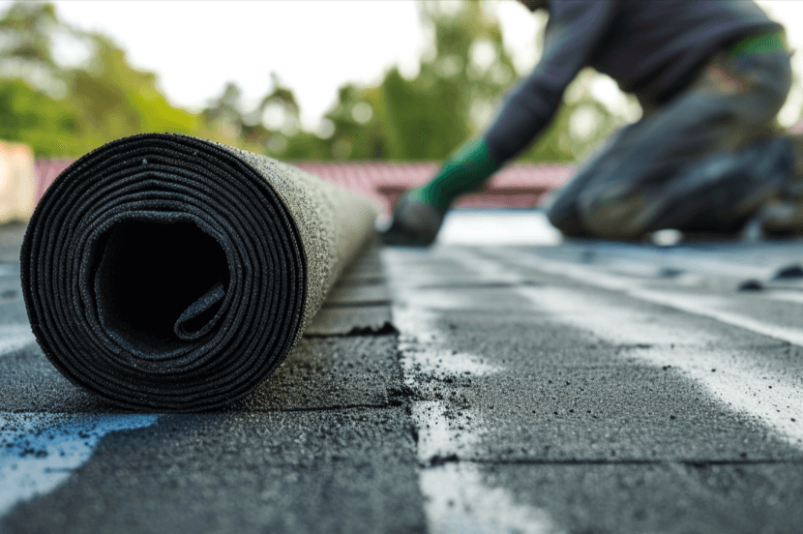Best Practices for Ensuring Proper Roof Ventilation
A balanced consumption and exhaust vent ratio, commonly 1:300, plays a crucial duty, with intake vents ideally placed at the reduced side of the roof covering for awesome air entrance and exhaust vents at the peak for cozy air departure. Keeping insulation away from vents is critical to stop air movement limitation.
Understand Air Flow Fundamentals
Effectively comprehending air flow basics is crucial for guaranteeing the durability and efficiency of roof. Effective ventilation mitigates dampness build-up and temperature extremes in the attic, both of which can result in considerable structural damage in time. A well-ventilated roof assists in preventing common concerns such as mold development, wood rot, and ice dams, which can compromise the honesty of the roofing products and the underlying structures.
The main goal of ventilation is to help with the activity of air, allowing for a regular exchange between the interior and outdoor atmospheres. This balance is achieved through a combination of consumption and exhaust vents that collaborate to preserve ideal airflow. Intake vents, generally located along the eaves or soffits, enable fresh air to get in the attic room, while exhaust vents, commonly located at or near the roofing ridge, allow hot, humid air to run away.
Key factors influencing the effectiveness of roof covering air flow consist of appropriate placement, appropriate sizing, and making sure that both intake and exhaust vents are unblocked. Regular examination and maintenance are essential to identify potential blockages, damages, or ineffectiveness in the ventilation system, thereby safeguarding the roofing's efficiency and toughness.
Kinds Of Roof Covering Vents
Roofing vents play a vital duty in keeping effective attic ventilation and, by expansion, the general wellness of the roof covering system. Different types of roof vents are readily available, each with one-of-a-kind benefits customized to particular roofing requirements.

Soffit vents are installed under the eaves and job in tandem with roof vents to guarantee a well balanced consumption and exhaust system. By enabling cooler air to go into from below, soffit vents facilitate the expulsion of hot air via top vents. Gable vents, situated on the exterior walls of the attic, deal an additional effective option, especially in homes with saddleback roofs.
Evaluate Your Existing Ventilation

Following, consider the age and condition of your roof covering materials and ventilation components. Older systems might not abide by current structure codes or may have weakened gradually, minimizing their performance. Conduct a comprehensive assessment to identify any signs of wear and tear, such as corrosion, damages, or gaps that can compromise the system's efficiency.
In addition, measure the attic room temperature level and moisture degrees. High temperature levels and moisture can indicate inadequate ventilation.
Setup Best Practices
Efficient setup of roof covering ventilation systems is extremely important for guaranteeing optimal performance and longevity. Correct setup begins with recognizing the specific air flow demands of the roof and the structure it covers. This entails computing the appropriate ratio of intake to exhaust vents, generally sticking to the 1:300 guideline, which states one square foot of ventilation for every 300 square feet of attic flooring room.

Consumption vents ought to be installed at the roofing system's reduced side, often in the soffits, to enable great air our website to get in. Exhaust vents, on the various other hand, need to be mounted near or at the roofing system's top to assist in the leave of warm, moist air.
Seal all air vent connections meticulously to avoid air leaks and prospective water infiltration. Use top notch products and comply with supplier guidelines to ensure resilience and effectiveness. In addition, integrating ridge vents with baffles can significantly boost air flow performance by avoiding wind-driven rain and snow from entering the attic room.
Eventually, specific installment of roof air flow systems reduces potential problems such as mold growth, ice dams, and structural damages, ensuring the roof's stability and the structure's overall health.
Normal Upkeep Tips
Consistency in upkeep methods is basic to making sure the long-term effectiveness of roof covering ventilation systems. Throughout these inspections, make certain that vents are totally free of debris, nests, and other obstructions that could hamper air movement.
Cleaning the vents is another essential task. Use a soft brush or a vacuum to get rid of dust and particles from intake and exhaust vents. Beware not to harm the vent screens or louvers throughout the procedure. Additionally, inspect the attic room for any type of indications of water damages, which could endanger the stability of the roof system.
Appropriate insulation is just as important. Ensure that attic insulation does not obstruct the vents, as this can significantly limit air movement. Rearrange or replace it to preserve a reliable barrier. if any insulation has actually shifted or worked out.
Last but not least, replace any damaged or missing out on components immediately. Damaged vents, split roof shingles, or worn-out flashing can all add to insufficient air flow and needs to be addressed right away. Regular upkeep guarantees that the roof covering air flow system works ideally, therefore expanding the life-span of the roofing system Resources itself.
Final Thought
Making sure appropriate roof covering ventilation is paramount for preserving the performance and durability of a roof covering system. Adherence to the 1:300 intake and exhaust air vent proportion, coupled with the tactical positioning of vents, is necessary. Normal biannual evaluations, debris cleansing, and making sure insulation does not obstruct airflow are important techniques. Applying these best methods will cultivate a well-ventilated roof, therefore alleviating potential issues associated with moisture buildup and excessive warm, ultimately extending the roof's life expectancy.
A well balanced consumption and exhaust air vent ratio, commonly 1:300, plays a crucial function, with intake vents preferably positioned at the reduced edge of the roofing system for amazing air entry and exhaust vents at the top for cozy air departure. Intake vents, typically situated along the soffits or eaves, permit fresh air to go into the attic room area, while exhaust vents, frequently situated at or near the roof covering ridge, allow hot, moist air to get away.
Soffit vents are installed under the eaves and work anchor in tandem with roof covering vents to make sure a balanced intake and exhaust system. By enabling cooler air to enter from below, soffit vents facilitate the expulsion of hot air with upper vents. Adherence to the 1:300 intake and exhaust air vent proportion, coupled with the critical positioning of vents, is crucial.
 Mara Wilson Then & Now!
Mara Wilson Then & Now! Michael Oliver Then & Now!
Michael Oliver Then & Now! Tatyana Ali Then & Now!
Tatyana Ali Then & Now! Tina Louise Then & Now!
Tina Louise Then & Now! Kerri Strug Then & Now!
Kerri Strug Then & Now!